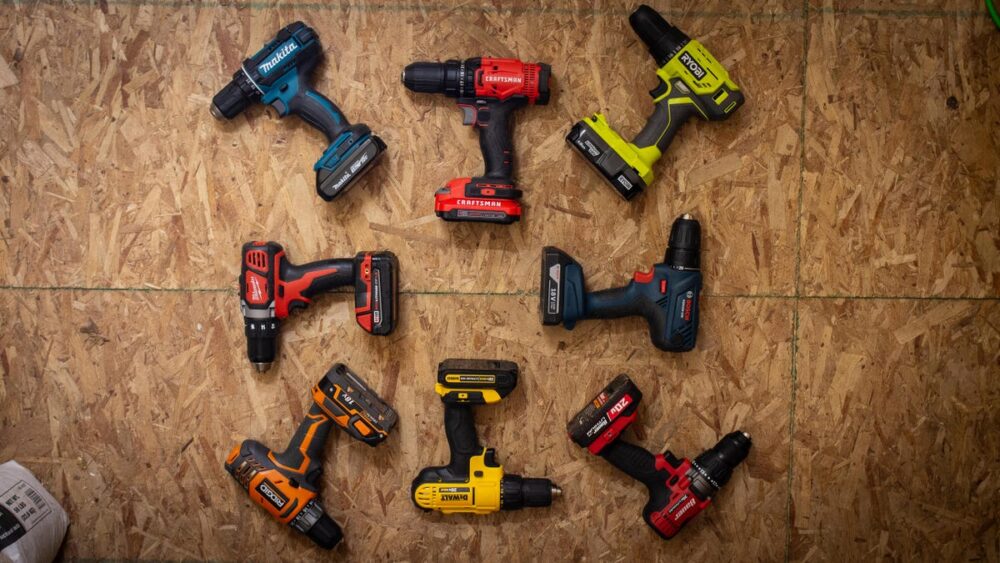From home renovations to DIY projects, cordless drills have become a must-have tool in every household. Offering convenience, power, and versatility, these devices can transform your DIY experience. This article is a comprehensive guide on the basics of cordless drills, their components, the benefits they bring to every home, and their practical applications. We’ll discuss key features to consider when purchasing one, how to use it safely, and even how to maintain it for longevity. Join us as we delve deeper into the world of cordless drills.
Key Takeaways
- Cordless drills are versatile tools that offer convenience and efficiency, making them a must-have in every home.
- Understanding the components and mechanism of cordless drills can help users operate them more effectively.
- Cordless drills have numerous practical applications in everyday life, from assembling furniture to hanging pictures.
- When buying a cordless drill, key features to consider include power, speed, battery life, and the quality of the drill bits.
- Proper handling and operation of cordless drills not only ensures safety but also prolongs the tool’s lifespan.
- Comparing different models of cordless drills can help consumers make an informed purchase decision.
- Regular maintenance is crucial for the longevity of your cordless drill and can prevent common issues.
- Cordless drills play a significant role in DIY projects, enhancing efficiency and results.
- Top brands in the market offer high-quality cordless drills that stand out due to their performance, durability, and innovative features.
- The right drill bit can make a significant difference in the outcome of your project. There are various types of drill bits designed for different uses.
- Cordless drills have evolved significantly over the years due to technological advancements, transitioning from a luxury item to a household necessity.
Understanding the Basics of Cordless Drills
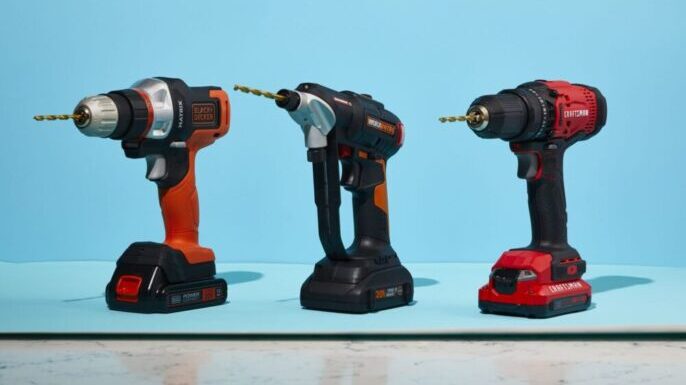
Source: goodhousekeeping.com
A cordless drill is a versatile power tool that is designed to drill holes and drive screws into various materials such as wood, metal, and plastic. Unlike traditional corded drills, cordless drills are powered by rechargeable batteries, providing you with the freedom to move around without being restricted by a power cord.
One of the key advantages of cordless drills is their portability. You can easily carry them around and use them in any location without the need for an electrical outlet. This makes cordless drills ideal for both indoor and outdoor projects.
Cordless drills consist of several components that work together to deliver power and control. These components include the motor, chuck, clutch, and battery. Understanding how these components function will help you make informed decisions when choosing a cordless drill that suits your needs.
In the next section, we will delve deeper into the components and mechanism of cordless drills, providing you with a detailed understanding of how they work. So let’s get started!
The Components and Mechanism of Cordless Drills
Cordless drills are versatile and portable power tools that have become an essential part of every homeowner’s toolkit. Understanding the components and mechanism of cordless drills is crucial for using them effectively and getting the most out of their capabilities.
Components of Cordless Drills
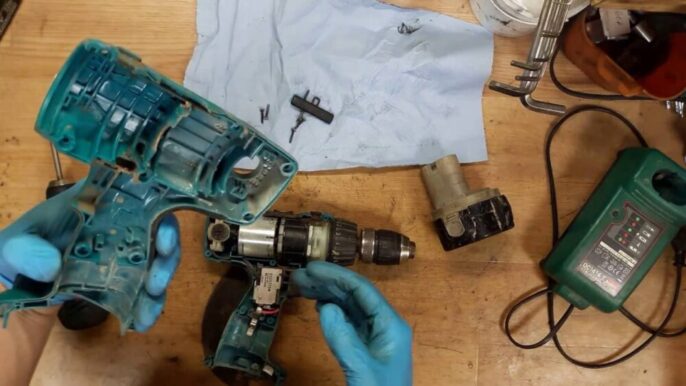
Source: m.youtube.com
A cordless drill consists of several key components that work together to provide power and functionality:
- Motor: The motor is the heart of the cordless drill. It converts electrical energy from the battery into mechanical energy to rotate the drill bit.
- Battery: Cordless drills are powered by rechargeable batteries. Lithium-ion batteries are commonly used due to their high energy density, longer run time, and lighter weight.
- Chuck: The chuck is the part of the drill that holds the drill bit in place. It allows for easy changing of bits and provides a secure grip on the bit during operation.
- Trigger: The trigger is the control mechanism that allows you to start and stop the drill’s rotation. The speed of the drill can be controlled by varying the pressure applied to the trigger.
- Gearbox: The gearbox is responsible for transmitting power from the motor to the chuck. It also provides different speed settings for drilling or driving screws.
- Clutch: The clutch is a feature that allows you to adjust the torque or rotational force applied by the drill. This helps prevent overdriving screws or damaging materials.
- Handle: The handle provides a comfortable grip and control over the drill during operation. Some cordless drills have adjustable handles for better ergonomics.
Mechanism of Cordless Drills
The mechanism of cordless drills involves the following steps:
- Power Generation: When the trigger is pressed, it completes the electrical circuit, allowing current to flow from the battery to the motor.
- Motor Rotation: The current from the battery powers the motor, which converts electrical energy into mechanical energy. This rotation is transferred to the chuck through the gearbox.
- Chuck Operation: The chuck holds the drill bit securely and rotates it at high speeds. This allows for drilling holes or driving screws into various materials.
- Clutch Engagement: The clutch engages when a certain level of resistance is encountered. It disengages the motor from the chuck, preventing overdriving or damaging the material being worked on.
Cordless drills are designed to be user-friendly and efficient, making them suitable for a wide range of applications in both professional and DIY settings. Understanding their components and mechanism will help you make informed decisions when choosing and using a cordless drill for your projects.
Why Every Home Needs a Cordless Drill
Having a cordless drill in your home is not just a luxury, but a necessity. Whether you are a DIY enthusiast or simply need to perform basic household repairs, a cordless drill can be an invaluable tool. Here are some of the key benefits of having a cordless drill in your home:
Versatility and Convenience
A cordless drill offers unmatched versatility and convenience. Unlike corded drills, which require a power outlet and limit your mobility, cordless drills are powered by rechargeable batteries. This means you can take them anywhere and use them in tight spaces or areas without electricity.
Efficiency and Time-Saving
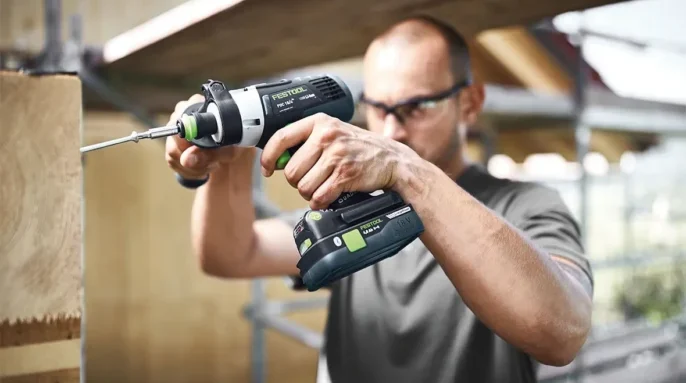
Source: festool.co.uk
With a cordless drill, you can complete tasks more efficiently and save valuable time. The powerful motor and adjustable speed settings allow you to quickly drill holes or drive screws with ease. No more manual labor or struggling with hand tools.
Portability
Cordless drills are lightweight and compact, making them easy to carry around. Whether you need to work on a project indoors or outdoors, a cordless drill can be easily transported from one location to another.
No Tangling Cords
One of the most frustrating aspects of using corded drills is dealing with tangled cords. With a cordless drill, you can say goodbye to this annoyance. No more tripping over cords or spending time untangling them.
Increased Safety
Cordless drills are designed with safety features that make them safer to use compared to their corded counterparts. They often have built-in LED lights for better visibility in dark areas and ergonomic handles for improved grip and control.
Cost-Effective
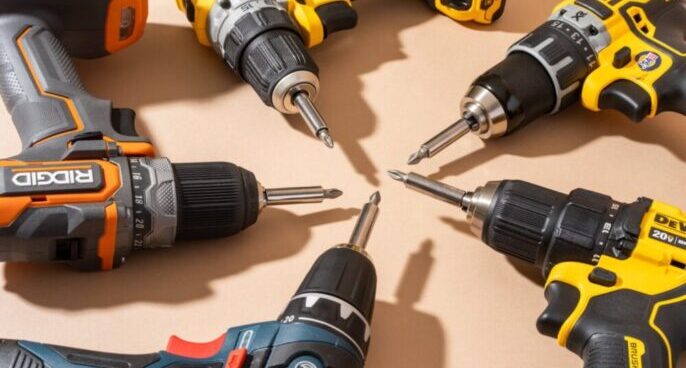
Source: nytimes.com
While cordless drills may initially seem more expensive than corded drills, they are actually more cost-effective in the long run. You don’t have to worry about buying extension cords or being limited by the length of the cord. Additionally, cordless drills are durable and built to last, saving you money on frequent replacements.
Overall, a cordless drill is a must-have tool in every home. Its versatility, convenience, efficiency, portability, safety features, and cost-effectiveness make it an essential addition to your toolbox. Whether you are a professional or a DIY enthusiast, having a cordless drill will greatly enhance your ability to tackle various projects and repairs around the house.
Practical Applications of Cordless Drills in Everyday Life
Cordless drills are versatile tools that can be used in a variety of practical applications in everyday life. Whether you are a DIY enthusiast or simply need to tackle some household tasks, a cordless drill can make your life easier and more efficient. Here are some common ways you can use a cordless drill in your daily life:
- Furniture Assembly and Repairs
One of the most common uses for a cordless drill is assembling furniture. With the right drill bit, you can quickly and easily drive screws into wood, metal, or plastic, making furniture assembly a breeze. Additionally, if you have any loose or broken furniture parts, a cordless drill can help you secure them back in place.
- Hanging Shelves and Pictures
When it comes to hanging shelves or pictures on the wall, a cordless drill is essential. It allows you to quickly drill pilot holes and drive screws into the wall without the need for manual effort. This not only saves time but also ensures that your shelves and pictures are securely mounted.
- Home Renovations
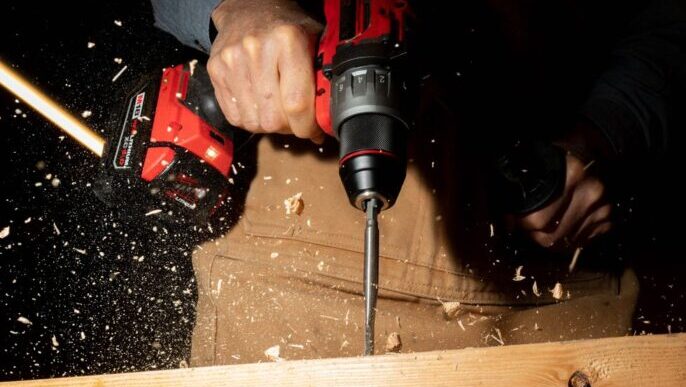
Source: popularmechanics.com
If you’re planning on doing any home renovations, a cordless drill is a must-have tool. From removing old screws and nails to drilling new holes for fixtures and fittings, a cordless drill can handle a wide range of tasks. It can also be used for sanding, polishing, and buffing surfaces when paired with the appropriate attachments.
- Gardening and Outdoor Projects
Cordless drills are not limited to indoor use only. They can also be used for various gardening and outdoor projects. For example, you can use a cordless drill to dig holes for planting flowers or installing fence posts. It can also be used to assemble outdoor furniture or repair garden structures.
- Automotive Repairs
When it comes to automotive repairs, a cordless drill can be a handy tool to have. It can help you remove and install screws, bolts, and nuts with ease. Whether you’re working on your car’s engine or simply need to change a tire, a cordless drill can save you time and effort.
These are just a few examples of the practical applications of cordless drills in everyday life. With their versatility and convenience, cordless drills have become an essential tool for homeowners, DIY enthusiasts, and professionals alike.
Key Features to Look for in a Cordless Drill
When it comes to buying a cordless drill, there are several key features that you should consider. These features will not only determine the performance and functionality of the drill but also ensure that it meets your specific needs and requirements. Here are some important factors to keep in mind when shopping for a cordless drill:
- Power and Torque
One of the most important features to consider is the power and torque of the cordless drill. Power is measured in volts (V), and higher voltage generally means more power. Torque, on the other hand, refers to the rotational force of the drill and is measured in Newton meters (Nm). Look for a drill with sufficient power and torque to handle your intended tasks.
- Battery Life
The battery life of a cordless drill is crucial, especially if you plan on using it for extended periods of time. Look for a drill with a long-lasting battery that can hold a charge for a significant amount of time. Lithium-ion batteries are known for their longer run times and faster charging capabilities.
- Speed Settings
A cordless drill with multiple speed settings allows you to adjust the speed according to the task at hand. This is particularly useful when working with different materials or when you need more control over the drilling process. Look for a drill with variable speed settings for added versatility.
- Chuck Size
The chuck size refers to the diameter of the hole where you insert the drill bit. Most cordless drills have a chuck size of either 3/8 inch or 1/2 inch. A larger chuck size allows you to use larger drill bits and provides more stability during drilling.
- Ergonomics
Comfort and ergonomics are important factors to consider, especially if you plan on using the drill for extended periods of time. Look for a drill with a comfortable grip and a lightweight design that reduces fatigue and strain on your hands and arms.
- Durability
Investing in a durable cordless drill is essential to ensure its longevity and performance. Look for drills made from high-quality materials that can withstand regular use and withstand accidental drops or impacts.
- Additional Features
Some cordless drills come with additional features that can enhance their functionality. These may include built-in LED lights for improved visibility in dark areas, belt clips for easy access and storage, and magnetic bit holders for convenience.
By considering these key features, you can make an informed decision when buying a cordless drill that meets your specific needs and provides you with the performance and functionality required for your projects.
Understanding Power, Speed, and Battery Life in Cordless Drills
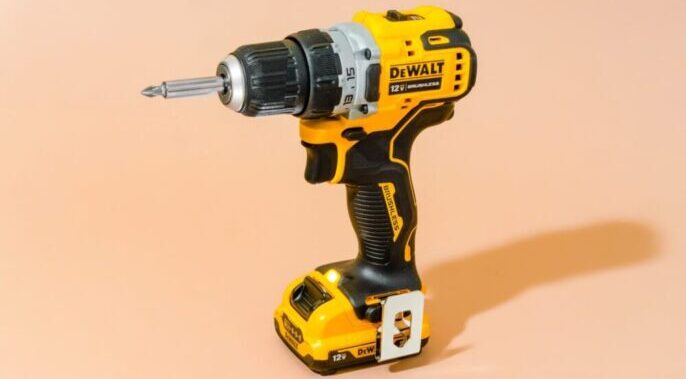
Source: nytimes.com
When it comes to cordless drills, understanding the power, speed, and battery life is essential. These factors play a crucial role in determining the performance and efficiency of the drill. Let’s take a closer look at each of these aspects:
Power
The power of a cordless drill is measured in volts (V). Higher voltage drills generally offer more power and are capable of handling tougher tasks. For everyday household use, a drill with a voltage between 12V and 18V should suffice. However, if you plan on tackling heavy-duty projects, you may want to consider a drill with a higher voltage.
Speed
The speed of a cordless drill is measured in revolutions per minute (RPM). It refers to how fast the drill bit rotates. Most cordless drills come with variable speed settings, allowing you to adjust the RPM according to the task at hand. Lower speeds are ideal for driving screws, while higher speeds are better suited for drilling into harder materials like metal or concrete.
Battery Life
The battery life of a cordless drill is an important consideration, especially if you have extensive projects or need to work for extended periods. Cordless drills typically use lithium-ion batteries, which offer longer run times and faster charging compared to older battery technologies. Look for drills with batteries that have a higher ampere-hour (Ah) rating for longer-lasting power.
It’s worth noting that the power, speed, and battery life of a cordless drill are interconnected. Higher power often means higher speed capabilities but can also drain the battery faster. Similarly, longer battery life may come at the expense of reduced power or speed. Finding the right balance that suits your needs is crucial.
Now that you understand the basics of power, speed, and battery life in cordless drills, you can make an informed decision when choosing the right drill for your needs.
How to Use a Cordless Drill Safely and Effectively
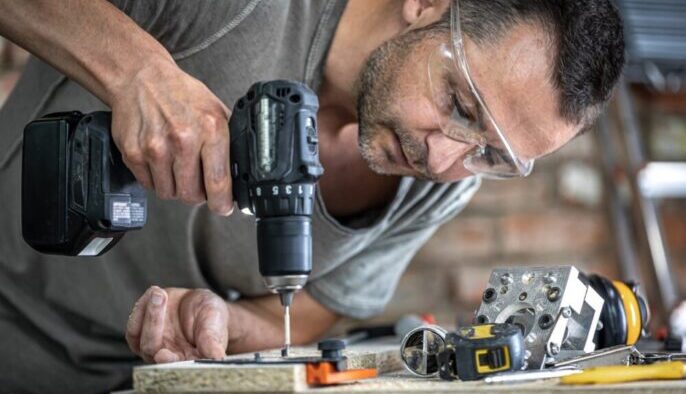
Source: bobvila.com
Using a cordless drill can be a game-changer when it comes to completing various tasks around the house. However, it is important to use this tool safely and effectively to avoid accidents and achieve the best results. In this user’s manual, we will guide you through the proper usage of a cordless drill.
- Familiarize Yourself with the Drill
Before using a cordless drill, take some time to read the instruction manual provided by the manufacturer. Familiarize yourself with the different parts of the drill, such as the chuck, trigger, and speed settings. Understanding how the drill works will help you operate it safely.
- Choose the Right Drill Bit
Selecting the correct drill bit for your project is crucial for both safety and effectiveness. Different materials require different types of drill bits, such as wood, metal, or masonry. Refer to the manufacturer’s recommendations or consult a hardware store professional to ensure you have the right bit for the job.
- Wear Safety Gear
Always prioritize safety when using a cordless drill. Wear safety goggles to protect your eyes from flying debris and gloves to provide a better grip on the tool. If you are working in a dusty environment, consider wearing a dust mask to prevent inhalation of particles.
- Secure Your Workpiece
Before drilling, make sure your workpiece is securely clamped or held in place. This will prevent it from moving or spinning while you are drilling, reducing the risk of accidents and ensuring accurate results.
- Start Slowly
When starting to drill, begin at a low speed and gradually increase it as needed. This allows you to maintain control over the drill and prevents the bit from slipping or getting stuck. Starting slowly also reduces the chances of damaging the workpiece.
- Apply Steady Pressure
While drilling, apply steady and even pressure on the drill. Avoid pushing too hard, as this can cause the bit to bind or break. Let the drill do the work and guide it smoothly through the material.
- Use Proper Technique
Hold the drill with both hands, one on the handle and the other on the body for stability. Keep your fingers away from the chuck and rotating parts. Maintain a firm grip and maintain control over the tool at all times.
- Take Breaks
If you are working on a long project that requires continuous drilling, take regular breaks to prevent fatigue. This will help you maintain focus and avoid accidents caused by tiredness.
- Store Properly
After using a cordless drill, store it in a safe and dry place. Keep it out of reach of children and ensure that the battery is removed if not in use for an extended period of time.
By following these guidelines, you can use a cordless drill safely and effectively, allowing you to tackle various projects with confidence and ease.
Tips for Proper Handling and Operation of Cordless Drills
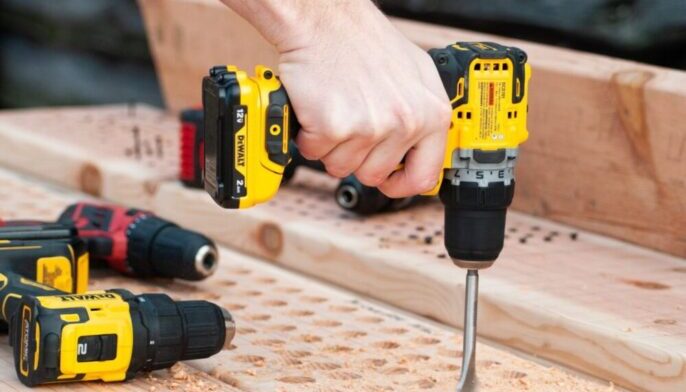
Source: nytimes.com
Proper handling and operation of cordless drills is essential to ensure safety and maximize their effectiveness. Here are some important tips to keep in mind:
- Read the Manual
Before using your cordless drill, take the time to read the user manual provided by the manufacturer. This will give you a clear understanding of the drill’s features, capabilities, and safety precautions.
- Wear Protective Gear
Always wear appropriate protective gear when operating a cordless drill. This includes safety glasses, gloves, and ear protection. These items will help protect you from flying debris, vibrations, and loud noises.
- Choose the Right Drill Bit
Using the correct drill bit for your project is crucial. Make sure to select a bit that is suitable for the material you are drilling into. Using the wrong bit can result in damage to both the drill and the material.
- Secure Your Workpiece
Before drilling, ensure that your workpiece is securely clamped or held in place. This will prevent it from moving or spinning while you are drilling, reducing the risk of accidents or injuries.
- Start Slowly
When starting a hole, begin at a low speed and gradually increase it as needed. This will help you maintain control over the drill and prevent it from slipping or causing damage to the workpiece.
- Use Proper Technique
Hold the drill firmly with both hands and maintain a stable stance while operating it. Apply steady pressure and let the drill do the work without forcing it. Avoid leaning on the drill or putting excessive pressure on it, as this can lead to overheating or motor burnout.
- Keep the Drill Clean
Regularly clean your cordless drill to remove dust, debris, and other particles that can accumulate over time. This will help maintain its performance and prevent any issues caused by clogged vents or moving parts.
- Store Properly
When not in use, store your cordless drill in a dry and secure location. Keep it away from moisture, extreme temperatures, and direct sunlight. This will help prolong its lifespan and prevent any damage or deterioration.
By following these tips, you can ensure safe and effective operation of your cordless drill, allowing you to complete your projects with confidence and ease.
Comparing Cordless Drills: What Makes a Good Drill?
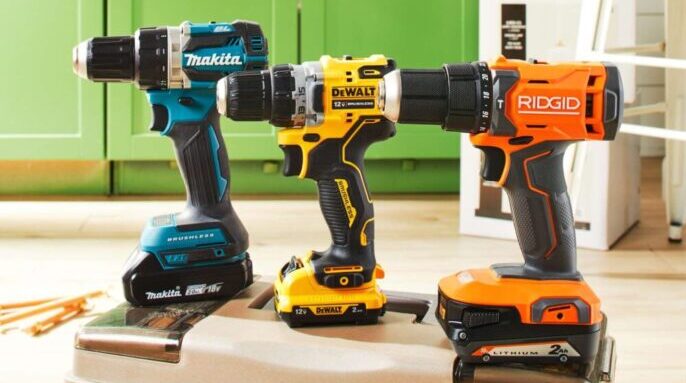
Source: realsimple.com
When it comes to comparing cordless drills, there are several factors that determine what makes a good drill. Whether you’re a professional tradesperson or a DIY enthusiast, choosing the right cordless drill can make a significant difference in the success of your projects. Here are some key considerations to keep in mind when comparing different models:
Power and Performance
One of the most important factors to consider is the power and performance of the drill. Look for a drill with a high voltage rating, as this will determine the strength and speed of the drill. Additionally, pay attention to the torque rating, which indicates the drill’s ability to handle tough materials and tasks.
Battery Life and Charging Time
Another crucial aspect to consider is the battery life and charging time of the drill. Opt for a drill with a long-lasting battery that can handle extended use without needing frequent recharging. Additionally, look for drills that come with fast-charging capabilities, so you can quickly get back to work when the battery runs out.
Ergonomics and Comfort
A good cordless drill should be comfortable to hold and use for extended periods. Look for drills with ergonomic designs that fit well in your hand and have features like rubberized grips for added comfort and control. Consider the weight of the drill as well, as a heavy drill can cause fatigue during prolonged use.
Durability and Build Quality
It’s essential to choose a cordless drill that is built to last. Look for drills made from high-quality materials that can withstand regular use and handle tough conditions. Pay attention to features like metal gearboxes and durable chuck systems, as these contribute to the overall durability of the drill.
Versatility and Features
A good cordless drill should offer versatility and a range of features to handle various tasks. Look for drills with adjustable speed settings, as this allows you to control the drilling speed based on the material you’re working with. Additionally, consider drills with built-in LED lights, belt clips, and other convenient features that enhance usability.
Warranty and Customer Support
Lastly, consider the warranty and customer support offered by the manufacturer. A good cordless drill should come with a solid warranty that covers any defects or issues that may arise. Additionally, look for manufacturers that provide excellent customer support, so you can easily get assistance if you encounter any problems with your drill.
By considering these factors when comparing cordless drills, you can ensure that you choose a good drill that meets your specific needs and delivers reliable performance for all your projects.
Factors to Consider When Comparing Different Models of Cordless Drills
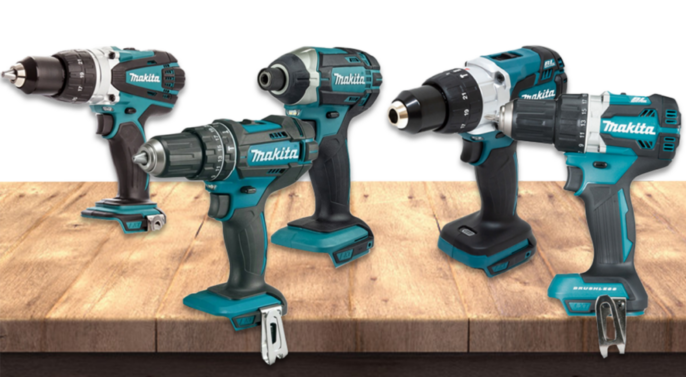
Source: blog.toolden.co.uk
When comparing different models of cordless drills, there are several factors that you should consider to ensure that you choose the right drill for your needs. Here are some key factors to keep in mind:
- Power and Torque
The power and torque of a cordless drill determine its ability to handle tough tasks. Look for a drill with a high voltage rating, as this indicates greater power. Additionally, consider the maximum torque rating, which determines the drill’s ability to drive screws and drill into tough materials.
- Battery Life and Charging Time
The battery life of a cordless drill is crucial, especially if you plan on using it for extended periods. Look for a drill with a long battery life or consider purchasing an extra battery pack. Also, pay attention to the charging time of the battery, as shorter charging times can save you valuable time.
- Speed and Variable Speed Settings
The speed of a cordless drill is measured in rotations per minute (RPM). Higher RPMs allow for faster drilling and driving. Additionally, look for a drill with variable speed settings, as this allows you to adjust the speed according to the task at hand.
- Ergonomics and Weight
A comfortable grip and lightweight design are essential for reducing fatigue during prolonged use. Consider the ergonomics of the drill, including the handle design and overall weight. This will ensure that you can work comfortably for longer periods without straining your hands or arms.
- Chuck Size and Compatibility
The chuck size determines the maximum diameter of the drill bit that can be used with the drill. Most cordless drills have a chuck size of 3/8 inch or 1/2 inch. Consider the type of projects you will be working on and choose a drill with a chuck size that accommodates your needs. Additionally, ensure that the drill is compatible with a wide range of drill bits and accessories.
- Durability and Warranty
Investing in a durable cordless drill is essential to ensure its longevity. Look for drills made from high-quality materials that can withstand regular use and accidental drops. Additionally, check the warranty offered by the manufacturer to protect your investment.
By considering these factors when comparing different models of cordless drills, you can make an informed decision and choose a drill that meets your specific requirements.
Maintenance Tips for Your Cordless Drill: Ensuring Longevity
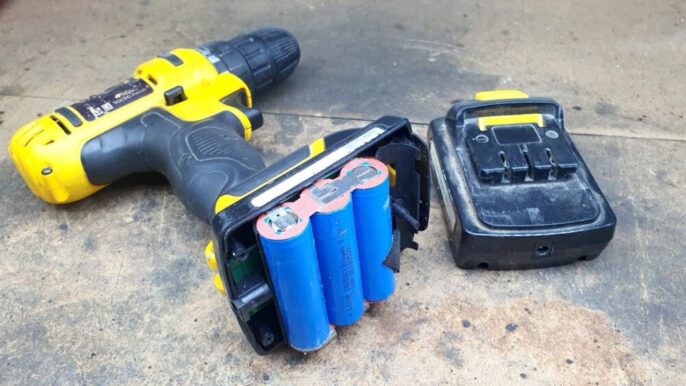
Source: m.youtube.com
Proper maintenance is essential to ensure the longevity and optimal performance of your cordless drill. By following a few simple tips, you can keep your drill in top shape and avoid unnecessary repairs or replacements. Here are some maintenance tips to help you get the most out of your cordless drill:
- Clean the Drill Regularly
Regular cleaning is important to remove dust, debris, and other particles that can accumulate on your drill. Use a soft cloth or brush to wipe down the exterior of the drill and remove any dirt or grime. Pay special attention to the chuck, as it can collect debris that may affect its performance.
- Lubricate Moving Parts
To ensure smooth operation, it’s important to lubricate the moving parts of your cordless drill. Apply a small amount of lubricant to the chuck, gears, and other moving components. This will help reduce friction and prevent wear and tear.
- Check and Tighten Screws
Regularly inspect the screws on your cordless drill and make sure they are tight. Loose screws can affect the stability and performance of your drill. Use a screwdriver to tighten any loose screws you find.
- Store Properly
When not in use, store your cordless drill in a dry and clean area. Avoid exposing it to extreme temperatures or moisture, as this can damage the battery and other components. Use a protective case or bag to keep your drill safe from dust and debris.
- Charge the Battery Correctly
Proper charging is crucial for maintaining the battery life of your cordless drill. Follow the manufacturer’s instructions for charging the battery and avoid overcharging or undercharging it. This will help prolong the battery’s lifespan and ensure optimal performance.
- Replace Worn-out Parts
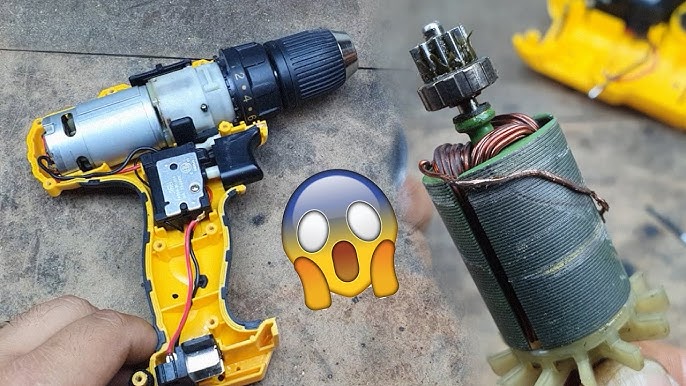
Source: youtube.com
If you notice any worn-out or damaged parts on your cordless drill, such as the chuck or battery, it’s important to replace them promptly. Using a drill with faulty parts can lead to poor performance and potential safety hazards.
- Follow Safety Guidelines
Always follow the safety guidelines provided by the manufacturer when using your cordless drill. This includes wearing appropriate protective gear, using the drill in a well-ventilated area, and avoiding any unsafe practices.
By following these maintenance tips, you can ensure the longevity and reliable performance of your cordless drill. Regular cleaning, lubrication, and proper storage will help keep your drill in top condition for years to come.
Common Issues with Cordless Drills and How to Fix Them
In this section, we will discuss some common issues that you may encounter with cordless drills and provide you with solutions on how to fix them. Cordless drills are reliable tools, but like any other equipment, they can experience problems from time to time. Understanding these issues and knowing how to troubleshoot them can save you time and frustration.
- Battery Not Holding a Charge
One of the most common issues with cordless drills is a battery that doesn’t hold a charge. If you find that your drill’s battery is not lasting as long as it used to, there are a few possible causes:
- The battery may be old or worn out. In this case, you will need to replace the battery with a new one.
- The battery contacts may be dirty or corroded. Clean the contacts using a soft cloth or a small brush.
- The charger may be faulty. Try using a different charger to see if that solves the problem.
- Drill Bit Getting Stuck
Another common issue is when the drill bit gets stuck in the chuck and won’t come out. Here’s what you can do:
- Make sure the drill is turned off and unplugged.
- Hold the chuck firmly and try turning it counterclockwise to release the bit.
- If the bit is still stuck, tap the chuck gently with a rubber mallet to loosen it.
- Overheating
If your cordless drill starts overheating during use, it could be due to several reasons:
- You may be putting too much pressure on the drill. Try reducing the pressure and allowing the drill to cool down.
- The drill may be running at a high speed for an extended period. Give it a break and let it cool down before using it again.
- The ventilation slots on the drill may be blocked. Clean them using compressed air or a soft brush.
- Loss of Power
If you notice a sudden loss of power in your cordless drill, there are a few things you can check:
- Make sure the battery is fully charged. If not, recharge it before using the drill.
- Check the battery contacts for dirt or corrosion and clean them if necessary.
- Inspect the drill’s motor for any signs of damage or wear. If you find any issues, it may be time to replace the motor.
Remember, if you encounter any issues with your cordless drill that you are unable to fix yourself, it’s always best to consult the manufacturer’s manual or contact customer support for assistance. Regular maintenance and proper handling can help prevent many common issues with cordless drills.
The Role of Cordless Drills in DIY Projects: A Case Study
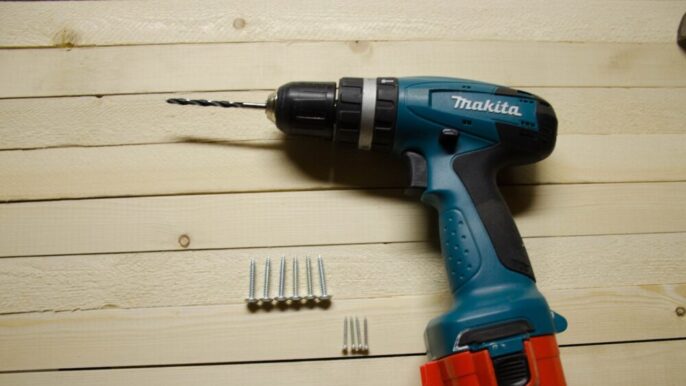
Source: whatsthebest.co.uk
When it comes to DIY projects, having the right tools is essential. One tool that plays a crucial role in many DIY projects is the cordless drill. In this case study, we will explore the various ways in which cordless drills can be used and their impact on the overall success of DIY projects.
Efficiency and Convenience
One of the main reasons why cordless drills are so popular in DIY projects is their efficiency and convenience. Unlike corded drills, which require a power source and limit mobility, cordless drills offer freedom of movement and can be used anywhere without the need for an electrical outlet. This makes them ideal for working in tight spaces or areas without easy access to power.
Versatility
Cordless drills are incredibly versatile tools that can be used for a wide range of tasks. From drilling holes to driving screws, they can handle various materials such as wood, metal, and plastic. This versatility makes them indispensable in DIY projects, whether you’re building furniture, installing shelves, or working on home repairs.
Power and Performance
Despite their compact size, cordless drills pack a punch when it comes to power and performance. With advancements in battery technology, modern cordless drills offer high torque and speed capabilities that rival their corded counterparts. This allows users to tackle even the toughest drilling and driving tasks with ease.
Portability
Another advantage of cordless drills is their portability. With no cords to worry about, you can easily transport your drill from one location to another without any hassle. This makes them perfect for DIY enthusiasts who often find themselves working on projects in different areas of their home or even outside.
Safety
Cordless drills are designed with safety in mind. They often come with features such as built-in LED lights for better visibility, ergonomic handles for a comfortable grip, and adjustable clutch settings to prevent overdriving screws. These safety features not only protect the user but also ensure the quality and accuracy of the work being done.
Time and Cost Savings
Using a cordless drill in DIY projects can save both time and money. With their efficiency and versatility, tasks that would typically take hours can be completed in a fraction of the time. Additionally, having a cordless drill eliminates the need to hire professionals for simple tasks, saving you money on labor costs.
In conclusion, cordless drills play a vital role in DIY projects by providing efficiency, convenience, versatility, power, portability, safety, and cost savings. Whether you’re a seasoned DIY enthusiast or just starting out, investing in a high-quality cordless drill is a decision that will greatly enhance your DIY experience.
How Cordless Drills Can Transform Your DIY Experience
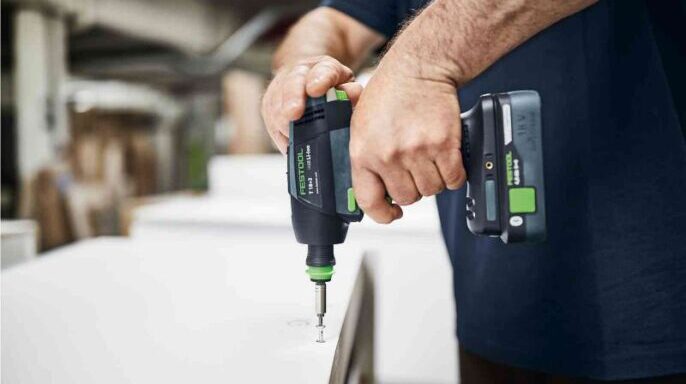
Source: dm-tools.co.uk
When it comes to DIY projects, having the right tools can make all the difference. And one tool that can truly transform your DIY experience is a cordless drill. Whether you’re a seasoned DIY enthusiast or just starting out, a cordless drill is a must-have tool in your arsenal. Here’s how it can take your DIY projects to the next level:
- Convenience and Portability
One of the biggest advantages of a cordless drill is its convenience and portability. Unlike corded drills, which require an electrical outlet and can limit your range of movement, cordless drills are powered by rechargeable batteries. This means you can take them anywhere without worrying about finding a power source. Whether you’re working in your garage, backyard, or even on a ladder, a cordless drill gives you the freedom to move around and work in any location.
- Versatility
A cordless drill is a versatile tool that can handle a wide range of tasks. From drilling holes to driving screws, it can be used for various applications in different materials such as wood, metal, and plastic. With the right drill bits and attachments, you can easily switch between tasks and tackle different projects with ease. Whether you’re building furniture, installing shelves, or assembling DIY projects, a cordless drill can handle it all.
- Time and Effort Savings
Using a cordless drill can significantly save you time and effort compared to manual tools. With its powerful motor and adjustable speed settings, you can quickly drill holes and drive screws with precision and efficiency. This means less time spent on each task and more time for other important aspects of your project. Additionally, the ergonomic design of cordless drills reduces strain on your hands and wrists, making it easier and more comfortable to use for extended periods.
- Increased Productivity
By having a cordless drill in your toolbox, you can increase your productivity and complete projects faster. The ability to quickly switch between drilling and driving modes, as well as the convenience of not having to deal with cords, allows you to work more efficiently. Whether you’re working on small DIY projects or larger renovations, a cordless drill can help you get the job done in less time.
- Cost Savings
Investing in a cordless drill can actually save you money in the long run. By having this versatile tool at your disposal, you won’t need to hire professionals or rent expensive equipment for simple tasks. You can easily handle minor repairs, installations, and other DIY projects on your own, saving you the cost of hiring someone else to do it for you.
In conclusion, a cordless drill is an essential tool that can transform your DIY experience. Its convenience, versatility, time and effort savings, increased productivity, and cost savings make it a must-have for every homeowner. So if you’re looking to take your DIY projects to the next level, consider investing in a high-quality cordless drill.
Top Brands and Models of Cordless Drills
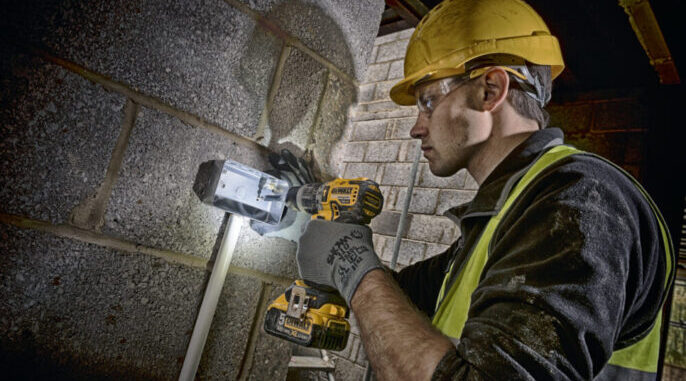
Source: mcquillantools.ie
When it comes to cordless drills, there are several top brands and models that have gained a reputation for their quality and performance. In this section, we will review some of the best brands and models available in the market.
- DEWALT DCD796N XR Brushless
The Dewalt DEWALT DCD796N is a highly popular cordless drill known for its power and durability. It features a brushless motor that provides efficient performance and longer runtime. With its compact design and lightweight construction, this drill is perfect for both professional use and DIY projects.
- Makita DHP458Z
The Makita DHP458Z is another top-rated cordless drill that offers excellent performance. It comes with a powerful motor that delivers high torque and fast drilling speed. The drill also features an ergonomic design, making it comfortable to use for extended periods.
- Milwaukee M18FPD2-0 18V
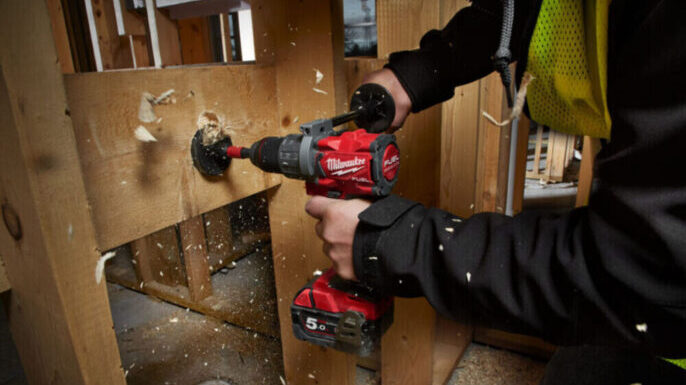
Source: ebay.co.uk
Milwaukee M18FPD2-0 is a heavy-duty cordless drill that is designed for tough tasks. It features a brushless motor that delivers maximum power and longer runtime. The drill also comes with advanced features like electronic clutch control and LED lights for enhanced convenience.
These are just a few examples of the top brands and models of cordless drills available in the market. Each brand and model has its own unique features and advantages, so it’s important to consider your specific needs and requirements before making a purchase.
What Sets Apart Top Brands in the Market of Cordless Drills?
When it comes to cordless drills, there are several top brands in the market that stand out from the rest. These brands have established themselves as leaders in the industry due to their commitment to quality, innovation, and customer satisfaction. So, what sets them apart? Let’s take a closer look.
- Quality and Durability
Top brands in the market of cordless drills prioritize quality and durability. They use high-quality materials and advanced manufacturing techniques to ensure that their drills can withstand heavy use and last for a long time. These brands often subject their products to rigorous testing to ensure that they meet the highest standards of performance and reliability.
- Innovative Features
Another factor that sets apart top brands is their focus on innovation. They continuously strive to develop new features and technologies that enhance the functionality and usability of their drills. From brushless motors for increased power and efficiency to ergonomic designs for improved comfort, these brands are always pushing the boundaries of what cordless drills can do.
- Wide Range of Options
Top brands understand that different users have different needs and preferences. That’s why they offer a wide range of options when it comes to cordless drills. Whether you’re a professional contractor or a DIY enthusiast, you can find a drill that suits your specific requirements. These brands offer drills with varying power levels, battery capacities, and additional features, allowing you to choose the one that best fits your needs.
- Excellent Customer Support
Customer satisfaction is a top priority for these brands, and they go above and beyond to provide excellent customer support. They offer warranties on their products and have dedicated customer service teams that are ready to assist with any questions or concerns you may have. Whether you need help with troubleshooting or want to learn more about the features of your drill, these brands are there to support you every step of the way.
- Reputation and Trust
Top brands in the market of cordless drills have built a strong reputation and earned the trust of their customers. They have a track record of delivering high-quality products that perform exceptionally well. Their drills are often recommended by professionals in the industry, and their customer reviews speak for themselves. When you choose a drill from one of these top brands, you can have confidence that you’re investing in a reliable and trustworthy tool.
Overall, what sets apart top brands in the market of cordless drills is their commitment to quality, innovation, customer satisfaction, and their ability to offer a wide range of options. By choosing a drill from one of these brands, you can be confident that you’re getting a high-quality tool that will meet your needs and exceed your expectations.
How to Choose the Right Drill Bit for Your Project: A Comprehensive Guide
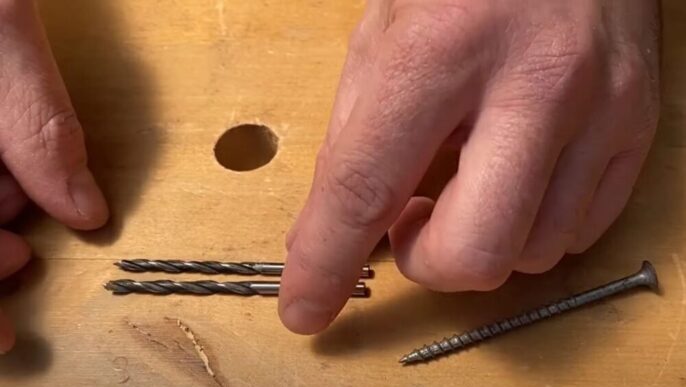
Source: tapdrillsize.com
Choosing the right drill bit is essential for the success of any project. Whether you’re a professional or a DIY enthusiast, having the appropriate drill bit can make a significant difference in the outcome of your work. In this comprehensive guide, we will walk you through the steps to help you choose the right drill bit for your project.
- Determine the Material You’re Working With
The first step in choosing the right drill bit is to identify the material you’ll be drilling into. Different materials require different types of drill bits. For example, wood, metal, concrete, and tile all require specific drill bits designed for their respective materials.
- Consider the Size of the Hole
The size of the hole you need to drill is another important factor to consider. Drill bits come in various sizes, ranging from small diameters for precise holes to larger diameters for bigger holes. Make sure to choose a drill bit that matches the size of the hole you want to create.
- Understand the Type of Drill Bit
There are several types of drill bits available, each designed for specific applications. Some common types include twist bits, spade bits, masonry bits, and hole saws. Research and understand the different types of drill bits to determine which one is best suited for your project.
- Consider the Shank Type
The shank is the part of the drill bit that fits into the chuck of your drill. It’s important to choose a drill bit with a shank that matches your drill’s chuck size. Common shank types include round shanks and hex shanks.
- Evaluate the Coating
Drill bits can come with various coatings that enhance their performance and durability. Some common coatings include black oxide, titanium nitride, and cobalt. Consider the type of material you’ll be drilling into and choose a drill bit with a coating that suits your needs.
- Check the Drill Bit’s Compatibility
Before making a final decision, ensure that the drill bit you choose is compatible with your drill. Different drills have different chuck sizes and mechanisms, so it’s important to select a drill bit that can be securely attached to your drill.
- Seek Recommendations and Reviews
Lastly, don’t hesitate to seek recommendations from professionals or read reviews from other users. Their experiences can provide valuable insights and help you make an informed decision when choosing the right drill bit for your project.
By following these steps, you can confidently select the right drill bit for your project, ensuring precise and efficient drilling every time. Remember to always prioritize safety and wear appropriate protective gear when using power tools.
Different Types of Drill Bits and Their Uses
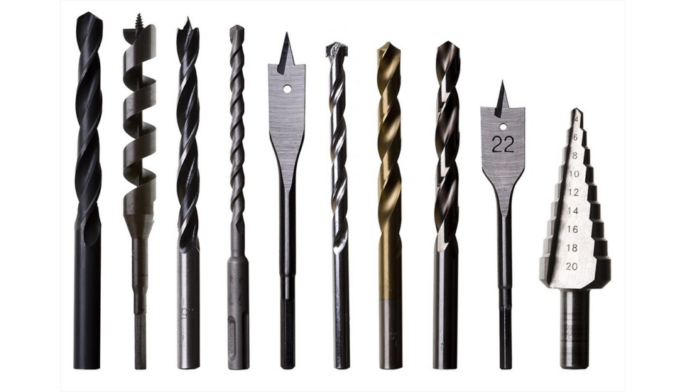
Source: gtse.co.uk
When it comes to using a cordless drill, having the right drill bit for the job is essential. Different types of drill bits are designed for specific materials and applications, and using the wrong one can result in poor performance or even damage to your drill or workpiece. In this section, we will explore the various types of drill bits and their uses, helping you choose the right one for your project.
- Twist Drill Bits
Twist drill bits are the most common type of drill bit and are suitable for drilling into a wide range of materials, including wood, metal, and plastic. They have a spiral-shaped flute that helps to remove debris as you drill, preventing clogging and overheating. Twist drill bits come in various sizes and can be used with both corded and cordless drills.
- Masonry Drill Bits
Masonry drill bits are specifically designed for drilling into hard materials such as concrete, brick, and stone. They have a carbide tip that can withstand the high heat generated when drilling into these materials. Masonry drill bits are typically used with a hammer function on your cordless drill to provide additional impact force.
- Spade Bits
Spade bits, also known as paddle bits, are used for drilling large holes in wood. They have a flat, paddle-shaped tip with a central point that helps to guide the bit into the material. Spade bits are commonly used for drilling holes for plumbing pipes or electrical wires.
- Forstner Bits
Forstner bits are ideal for drilling clean, flat-bottomed holes in wood. They have a center point and sharp cutting edges that create smooth-sided holes without splintering or tearing the wood. Forstner bits are commonly used for drilling holes for hinges, dowels, or decorative inlays.
- Hole Saw Bits
Hole saw bits are used for cutting large holes in wood, plastic, or metal. They consist of a circular saw blade with teeth and a pilot drill bit that guides the blade. Hole saw bits are commonly used for installing doorknobs, creating openings for pipes or cables, or making holes for recessed lighting.
- Countersink Bits
Countersink bits are used to create a conical recess in a material so that a screw can sit flush with the surface. They have a tapered drill bit and a fluted cutting edge that creates the recess. Countersink bits are commonly used in woodworking and metalworking applications.
- Step Drill Bits
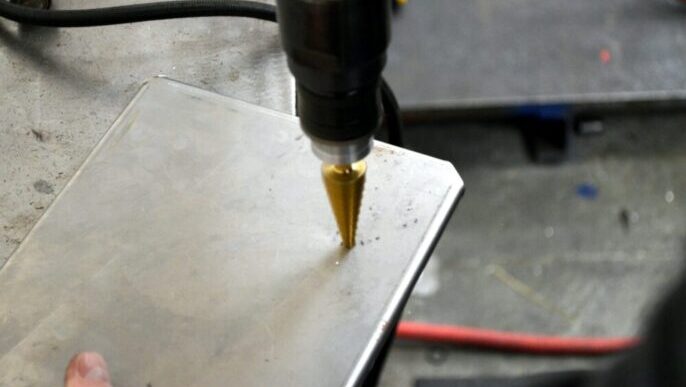
Source: astrotools.com
Step drill bits, also known as cone drill bits or unibits, are used for drilling holes of various sizes in thin materials such as sheet metal or plastic. They have multiple stepped diameters that allow you to drill different-sized holes with a single bit. Step drill bits are commonly used in electrical and HVAC installations.
These are just a few examples of the different types of drill bits available. It’s important to choose the right drill bit for your specific application to ensure optimal performance and results. Always refer to the manufacturer’s guidelines and safety instructions when using drill bits and other tools.
The Evolution of Cordless Drills: From Luxury to Necessity
Cordless drills have come a long way since their inception. What was once considered a luxury tool has now become a necessity in every home. The evolution of cordless drills has been driven by advancements in technology, making them more powerful, efficient, and user-friendly.
In the early days, corded drills were the norm. They required a constant power source and limited mobility. However, with the introduction of cordless drills, users gained the freedom to move around without being tethered to an outlet. This breakthrough innovation revolutionized the way we approach drilling tasks.
One of the key factors that contributed to the evolution of cordless drills is the development of lithium-ion batteries. These batteries are lightweight, have a longer runtime, and hold their charge for extended periods. This advancement eliminated the need for frequent recharging and allowed users to work for longer durations without interruption.
Another significant improvement in cordless drills is their power and performance. Today’s models are equipped with high-torque motors that can handle a wide range of drilling and driving applications. They offer variable speed settings, allowing users to adjust the drilling speed based on the material they are working with.
The design and ergonomics of cordless drills have also evolved over time. Manufacturers have focused on creating compact and lightweight models that are comfortable to hold and easy to maneuver. This makes them ideal for both professional contractors and DIY enthusiasts.
Furthermore, modern cordless drills come with a variety of features and accessories that enhance their versatility. They may include built-in LED lights for improved visibility in dark areas, adjustable clutch settings for precise torque control, and keyless chucks for quick and easy bit changes.
With all these advancements, it’s no wonder that cordless drills have transitioned from being a luxury tool to a necessity in every home. Whether you need to hang a picture frame, assemble furniture, or tackle a DIY project, having a cordless drill at your disposal can make the task easier and more efficient.
In conclusion, the evolution of cordless drills has transformed them from a luxury item to an essential tool in every home. The advancements in technology, such as lithium-ion batteries and high-torque motors, have made them more powerful, efficient, and user-friendly. With their versatility and convenience, cordless drills have become a must-have for homeowners and professionals alike.
The Impact of Technological Advancements on the Development of Cordless Drills
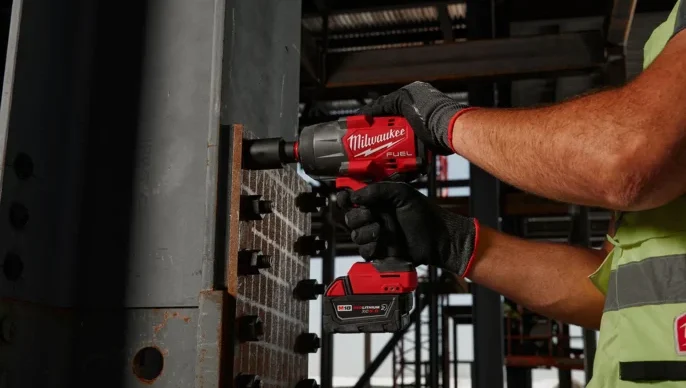
Source: ttigroup.com
Technological advancements have had a significant impact on the development of cordless drills. Over the years, these advancements have revolutionized the capabilities and performance of cordless drills, making them more efficient, powerful, and versatile tools.
One of the key technological advancements that has greatly influenced cordless drills is the improvement in battery technology. In the past, cordless drills were limited by the capacity and runtime of their batteries. However, with the development of lithium-ion batteries, cordless drills now have longer runtimes and faster charging times. This means that users can work for longer periods without having to constantly recharge their drills.
Another technological advancement that has contributed to the development of cordless drills is the improvement in motor technology. Modern cordless drills are equipped with high-performance brushless motors that offer several advantages over traditional brushed motors. Brushless motors are more efficient, generate less heat, and have a longer lifespan. They also provide increased power and torque, allowing users to tackle tougher drilling tasks with ease.
The introduction of smart technology has also had a significant impact on cordless drills. Some models now come with built-in sensors and connectivity features that allow users to monitor and control their drills remotely through smartphone apps. This not only enhances convenience but also enables users to track usage data, receive maintenance alerts, and access helpful resources.
Furthermore, advancements in ergonomics have made cordless drills more comfortable and user-friendly. Manufacturers have focused on designing drills with improved grip handles, lightweight construction, and balanced weight distribution. These features reduce fatigue and strain on the user’s hands and arms, making drilling tasks more comfortable and efficient.
Additionally, technological advancements have led to the development of specialized drill bits and accessories that enhance the versatility of cordless drills. There are now drill bits designed for specific materials such as wood, metal, or concrete, as well as attachments for tasks like driving screws, sanding, and cutting. These advancements have expanded the range of applications for cordless drills, making them indispensable tools in various industries and DIY projects.
In conclusion, technological advancements have played a crucial role in the development of cordless drills. From improved battery technology to smarter features and specialized accessories, these advancements have made cordless drills more powerful, efficient, and versatile. As technology continues to evolve, we can expect further innovations that will enhance the performance and capabilities of cordless drills even more.


